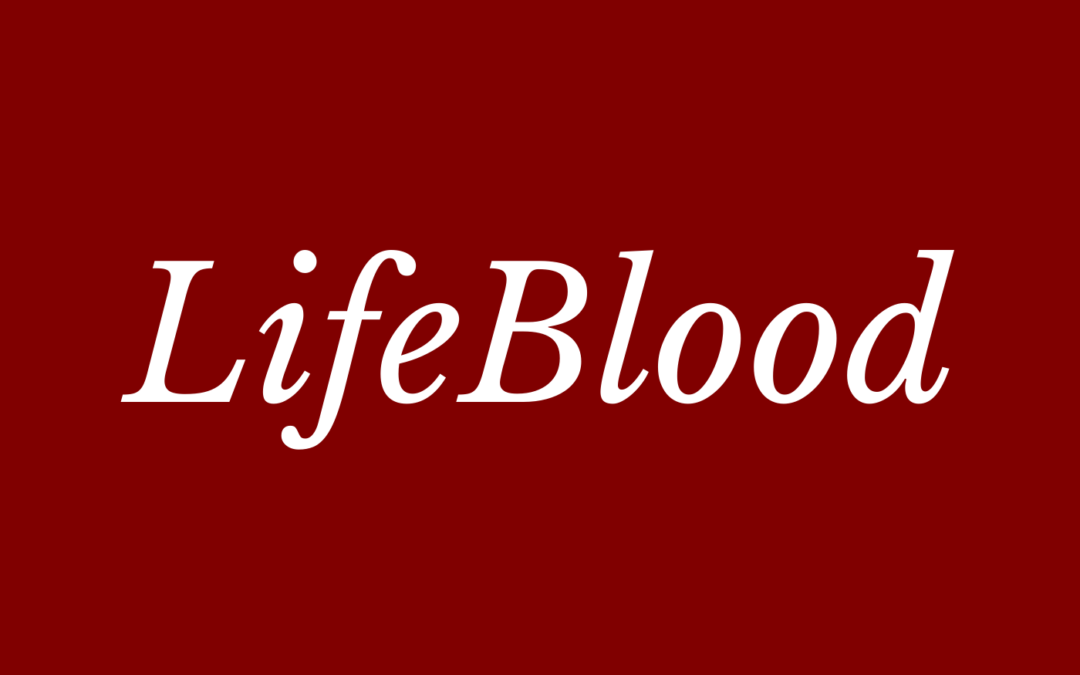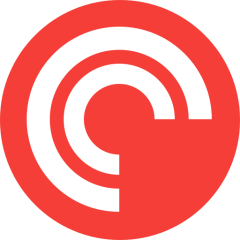EMF Protection with Justin Frandson
Have you ever thought about how Wi-Fi and other modern technology are affecting your body? Justin Frandson shares his research and experience on not only that, but what you can do about it!
Listen to us On
About the Episode
LifeBlood: We talked about B2B web design, how to authentically stand out in a crowded marketplace, and how to make sure all stakeholder’s voices are heard with Steve Ohanians, CoFounder and Director of Digital Strategy of WebEnertia.
Listen to learn why you need to find love in the work you’re doing!
You can learn more about Steve at WebEnertia.com, Facebook, Twitter, Instagram and LinkedIn.
Thanks, as always for listening! If you got some value and enjoyed the show, please leave us a review wherever you listen and subscribe as well.
You can learn more about us at LifeBlood.Live, Twitter, LinkedIn, Instagram, YouTube and Facebook or you’d like to be a guest on the show, contact us at [email protected].

George Grombacher
Lifeblood Host

Steve Ohanians
Guest
Episode Transcript
Unknown Speaker 0:00
Come on
george grombacher 0:12
one level at this is George G. And the time is right welcome. Today’s guest is strong and powerful Steve Ohanian. Steve, are you ready to do this? Let’s do it. Let’s Let’s go. Steve is the co founder and director of digital strategy with web inertia. They’re an inc 5000. Company accelerating, elevating, empowering, enhancing, transforming, and driving b2b brands with digital brand experiences and web design. Steve, tell us a little about your personal life. So more about your work and why you do what you do?
Steve Ohanians 0:41
Sure. So I’ll start in the mid 90s, I was really obsessed with designing and building websites, it was all the hype, and I really got into it, while at the same same time trying to figure out what I was going to do with my life. I was tried going to school for aerospace engineering and dropped out there and started a rock band, quit that. And at the whole time I was doing all this stuff I was designing and building websites. And it’s I was really intrigued with the concept of the World Wide Web and this interconnected system of pages and information that really anyone could contribute to.
And use our design along with technology to create something and that all that all really fascinated me and excited me. So I eventually went back to school to study, graphic design and computer science. And while I was in school, my business partner and I was coincidentally my best friends on up started webinars.
Unknown Speaker 1:47
Awesome. So you didn’t necessarily set out to do this, but it all worked out. I am definitely an accidental entrepreneur.
Steve Ohanians 1:56
I didn’t set out to start and grow a business I started because I really loved what I was doing. So that’s how it started. Well, nice. That’s awesome. And do you still owe it? Well, for me, the challenges are really different. I’m a CEO now, so I don’t get to design as much and
I am a very hands on to the detriment of my team.
I tend to be hands on on some things, but I actually love to choose it’s different challenges for me now than it was before. So now it’s all about creating an environment that my people are proud of to be part of creating great work, creating an experience for our clients. different challenges as a CEO than I was when it was just me and my partner designing and building sites. Yeah, yeah. Well, extra complexity and different opportunities and challenges and all that good stuff.
george grombacher 2:48
So obviously, as technology changes your opportunities and challenges change. How is your perspective on what you do? How has that changed?
Unknown Speaker 3:02
Well,
Unknown Speaker 3:04
I would say, maybe around six years ago, we decided to actually create a niche and focus
Unknown Speaker 3:15
and focus our
Unknown Speaker 3:17
brand experience on web design services primarily for b2b and b2b Tech. As opposed to the entire broader broad market where we were designing and building anything for anyone.
Unknown Speaker 3:30
We took a deep look at what made us unique as an agency. And there was a few things that we saw, one of it was worried Silicon Valley.
Steve Ohanians 3:39
And there are some of the most amazing b2b brands in the world are just in our backyard. And there’s a ton of investment in that space. And we’ve already worked with a lot of them. So we kind of learned how to solve some of those unique b2b challenges. And over the years, collected a lot of data around
Unknown Speaker 4:00
engagement and lead generation and b2b brand experiences. And we actually could create benchmarks out of these that we can use for clients. So when we made that shift, we immediately saw a 50% increase in our revenue that first year and having that niche really allowed our entire organization to focus, you know, focus, both as a business and focus our conversations with our clients. They’ll just became a lot more strategic when we did that. Nice. All right. So increase engagement, increase lead generation, I imagined conversion, all of it allows you to increase your focus and increase revenue by 50%. Those are all those are all super positive things. So
Unknown Speaker 4:48
why why do people come to you?
Unknown Speaker 4:52
Um,
Unknown Speaker 4:54
I think there’s a couple things. One is that b2b focus is an important
Unknown Speaker 5:00
thing. So we actually focus on the nuances of what makes a b2b versus b2c Different where b2c is looking for a single customer to make a purchase on a credit card, using the checkout process,
Unknown Speaker 5:17
on a b2b experience or a website,
Unknown Speaker 5:21
it has much higher price points, right, sometimes 10s of 1000s, hundreds of 1000s millions of dollars, million dollar investments sometimes, which require longer sales cycles, more education, different personas that are making the buying decisions,
Unknown Speaker 5:38
and that need buy in. So I think us understanding that and from there, trying to provide best practices around engagement and lead generation and content needs and user flows and you know, marketing technology integrations, I think that’s where that’s where our focus is, that’s where our strength is where we can help our clients. The other thing I would say is a lot of b2b brands and websites forget that at the end of the day, you’re dealing with people, not some arbitrary logo or name, like it’s easy, really easy to say, IBM did this, and Salesforce is doing this. But really, the decision makers or people behind those logos, right are behind those names. So where a lot of brands go wrong, b2b brands go wrong, as they start talking, really in depth about features and functionality and how great they are. And not necessarily focused on creating and building a relationship with the people that are making that decision. Right. And that’s, that’s where we can help we help you focus on creating the relationship, a while keeping track of all the different buyer personas that you have. Right? So again, for b2b, you have folks that are using the technology on a day to day basis. And you’ll saw CIOs and CTOs that are making a decision on whether this million dollar investment is right for me or not. Right. So and they all they all have inherently different content needs and call to action needs. So really focusing on building those relationships with those various buyer personas and solving their individual pain points, as opposed to saying my product does this, this this, right. So really helping organizations focus on people to generate trust.
Unknown Speaker 7:29
And having an authentic voice doing all that, John, I think that that makes a lot of sense. So talking about best practices, talking about educating your, your client on how it’s going to work to do a better job educating their customers and their end users and everybody else.
Unknown Speaker 7:50
How often do you run into people that say, Well, yeah, that all sounds good. But this is the way we’ve always done it.
Unknown Speaker 7:58
All the time?
Unknown Speaker 8:00
No, well, I shouldn’t say all the time, there’s definitely folks that have loud voices that want us to do things a certain way, right. And what we can do is, we come we come from it from a really with a data background, really looking at so one of the things that we do is we we do a report on fortune 500, large, largest b2b tech companies in the world, and we start studying there.
Unknown Speaker 8:32
We break down each one of their home pages around design functionality, navigation, content, all of that, and really start finding best practice data that correlates with higher engagement. So we’re coming at it from a data perspective, not necessarily an opinion perspective. So all we can do is provide them that at the end of the day, some decision makers, it’s their site they’re paying for if they want to put the door for that site on the roof instead of in the front of the house. And that’s up to them. Right. Let them do that. But we come from a data background, we try to give them all the data for them to make the right decision. Yeah, I appreciate that.
Unknown Speaker 9:13
Are there certain things that that have? You talked about how it’s so important, even though you are dealing with these large b2b companies, and that’s how that that is your focus where your expertise lies. But has it always been true that you need to keep your message rooted in the fact that we’re talking to people, is that more true today than it ever has been? Yeah, for sure. I mean, especially with folks being distributed, not everyone being I mean, even internally within a company’s culture, I think it’s important to keep that in mind. So yeah, I would say 100% agree with it’s more important now than it’s ever been. Yeah. And I you know, it’s I imagine that there’s just
Unknown Speaker 10:00
More, there are more probably companies that you’re competing with there are more potential clients and the internet.
Unknown Speaker 10:09
Is it possible that the Enter gets too crowded? There’s a lot of noise.
Unknown Speaker 10:14
That’s for sure. And so
Unknown Speaker 10:18
to your point, actually having that clear messaging where you’re talking to people, and you’re really focusing on building that relationship with that person, as opposed to being a part of the noise is important. The other part of it is actually having an authentic voice, right? Not just saying what everybody else is saying, what’s really unique about you, and why that person should care. So it’s more important now as it’s, it’s we’re flooded with 1000s of b2b SaaS companies all doing very similar things with small minor differences, all with a blue colored logo and trying to get your attention, right. So
Unknown Speaker 11:02
it’s more important now than ever to be authentic, and talk to people as opposed to just throwing out features. Right? Yeah. what a what a unique opportunity and challenge you have trying to get these massive, wildly successful companies to inject personality and authenticity and helping them to sort of craft and refine that as well, because it’s not necessarily easy for I think that we talked about IBM at some point for IBM to all of a sudden somehow make this massive, enterprise brand human and, and authentic. And you know, what’s interesting is we do these reports, where it actually proves that if you do do some of these best practices,
Unknown Speaker 11:49
it does improve engagement on your site, right? So there’s data behind it. So if you’re actually, if you follow some of these best practices, and you know, you, you have the authentic voice, you have a brand that stands out you, you’re you have a narrative that connects and resonates with the people that are coming to the site. And then you start measuring that against how long the person spent on that website versus a different site, you start seeing differences. So an IBM can choose to say, Everybody already knows who I am. So I don’t care. Or they can look at the data and say, Okay, if I make these changes, it’s actually going to increase my engagement, and eventually cells and lead generation and all that. So that’s what’s cool about actually looking at it from a data perspective, which we do. Yeah, fascinating, right? Because certainly, you do need to talk about narrative, but then you also need to be able to back it up with actual data and facts and information. So I appreciate that I’m sure that your customers, your clients appreciate that as well.
Unknown Speaker 12:50
What would be your advice to companies who are listening that maybe aren’t quite as big as IBM, so most companies that are out there, and they’re trying to figure out what that authentic voice is, or how they should more, be more giving or more human in the way that they’re interacting.
Unknown Speaker 13:11
And we don’t necessarily just work with large organizations. But I think kind of taken a deep, critical, look at yourself and start looking at your why you know, why you’re doing this, why you’re doing, how you’re doing this and who you’re doing it for. I think, once you establish those things, then
Unknown Speaker 13:36
it’s easier for you to come up with a message that’s resonating, it’s authentic, right, then you’re not trying to be someone else, I think you need to look inward and really try to figure out what makes you different, kind of like what we did as an agency, right? At some point, we have to decide now, what is why web inertia, right versus anybody else. So
Unknown Speaker 13:56
I think that is an important exercise that it turns into, it can turn into a messaging exercise or branding, exercise, whatever that is. But really having that foundation will allow you to have that authentic voice with with the folks you know, what’s really my fun conversationalist, or am I a very educational teaching voice. I think those are all things where every company is different. So
Unknown Speaker 14:23
but it all starts with a who, how, what.
Unknown Speaker 14:29
Nice, yeah, I think that that
Unknown Speaker 14:31
that makes a lot of sense. And, you know, I feel like that’s a place that we are as a as a country and as communities and as individuals right now are trying to ask a lot of questions. So probably a good not necessarily time of year but just a good time for us to be required sort of revisiting and questioning a lot of these things.
Unknown Speaker 14:53
I imagine a big challenge is just making sure that everybody on the team have the least
Unknown Speaker 15:00
Leadership Team of your clients making sure that they’re all feeling like they’re having their voices heard and that they’re getting input into this process is really important. Yeah. And we have processes that are specifically geared for that. Were we
Unknown Speaker 15:17
even evaluating? Who were talking to him? What’s the best way for us to talk with them, right, instead of just running everyone through cookie cutter process, because we’ll talk to an organization where they’ll say, Hey, we’re great on getting everybody in the same room, and doing a little doing a workshop where we can hear everyone and we’ll we’ll talk to some other organizations, they’ll say, Well, we do that we have one really loud voice that everyone else stops talking when he or she is talking, right. So at that point, we may decide to do individual interviews. But so there’s some nuances around getting everyone’s feedback as well. But we have processes, I think it’s really important for us that we get that feedback directly to our designers and engineers that are working as opposed to filtering it through someone else. So we like creating these workshops where our designers can ask questions for sanef, they can really break down the project into the business context, why we’re doing this project from from every stakeholders perspective.
Unknown Speaker 16:28
What does every stakeholders call and then try to bring all that together to, to a strategy to move forward?
Unknown Speaker 16:36
Based on what we can and can’t do at that point? Yeah, love it.
Unknown Speaker 16:41
Well, Steve, people are ready for your difference making tip, what do you have for them?
Unknown Speaker 16:46
Um, I would say do work that you love. And if you can’t at least find something that you love, and we do, and work hard at it and successful come.
Unknown Speaker 16:57
I think that that is great stuff that definitely gets to come.
Unknown Speaker 17:01
Do work that you love. If you can’t find what you can find something that you love in the work that you’re doing. I think that’s awesome. And, again, something that we all should be taking more time to think about. So appreciate it. Steve, thank you so much for coming on. Where can people learn more about you tell us the kind of companies that you are doing a great job for and how they can connect with you.
Unknown Speaker 17:23
So you can reach us by going to our website, www dot weg inertia, that’s w e b e n e AR ti comm or social web inertia on pretty much any social media platform. We’re on all of them. We typically work with mid to enterprise size b2b organizations or startups that are funded.
Unknown Speaker 17:49
And yeah, we’d love to hear from Excellent. Well, if you enjoyed this as much as I did show Steve your appreciation and share today’s show with a friend who also appreciates good ideas go to web inertia.com That’s w e b e n e r t ia.com fun man social media was to all those in the notes of the show. Thanks. Good, Steve. All right to get George. And until next time, keep fighting the good fight. We’re all in this together.
Transcribed by https://otter.ai
More Episodes
Fiduciary Rule Conspiracy Theory
Fiduciary Rule Conspiracy Theory Could there be a conspiracy theory about the new fiduciary rule? There is now! George G breaks down what he thinks is really going on. About the EpisodeCould there be a conspiracy theory about the new fiduciary rule? Who is it designed...
Focus on What Matters with Peter Mallouk
Focus on What Matters with Peter Mallouk Do you focus on what matters, or what seems urgent? Peter Mallouk talks about the value of taking a simplified approach to your finances! About the EpisodeWe focused on how to focus on what matters when it comes to your money,...
What’s Your Number and Does it Matter?
What's Your Number and Does it Matter? What's your number to live a comfortable retirement, and is that what you should be focused on? George G breaks the process down!About the EpisodeWhat's your number to live a comfortable retirement, and is that what you should be...
The Fiduciary Rule with Stephen Kagawa
The Fiduciary Rule with Stephen Kagawa A new fiduciary rule could negatively impact the way financial services and advice are delivered. Stephen Kagawa breaks down what you need to know!About the EpisodeWe focused on the fiduciary rule impacting how financial services...
Financial What If’s with Derek Mazzarella
Financial What If's with Derek Mazzarella There are a lot of financial what if's when it comes to retirement. Derek Mazzarella shares his perspective on how to find the success you're looking for!About the EpisodeWe focused on financial what if’s in retirement, how to...
Better Investing with Gil Baumgarten
Better Investing with Gil Baumgarten Could being more patient lead to better investing? Gil Baumgarten talks about how to become a permanent participant in the market and the benefits of doing it!About the EpisodeWe focused on better investing, what it means to be a...
Lifetime Income with Matt Wolniewicz
Lifetime Income with Matt Wolniewicz Even after we stop working, we still want consistent lifetime income. Matt Wolniewicz talks about how to make that happen with your 401(k)! About the EpisodeWe focused on creating lifetime income, the challenges of accumulating...
Money Advice for Young Adults
Money Advice for Young Adults What money advice would you give to your younger self? George G talks about the fundamentals for getting off to the right start!About the EpisodeWhat money advice would you give yourself as a young adult? The world of personal finance is...
Inflationary Vibes
Inflationary Vibes Is inflation really a problem, or does it just feel like it's a problem? George G breaks down the numbers and talks about our current reality! About the EpisodeIs inflation really a problem, or does it just feel like it's a problem? The Wall Street...
Join the show.
Interested in being on the show? Tell me a little bit more about you and what you’d like to talk about!







